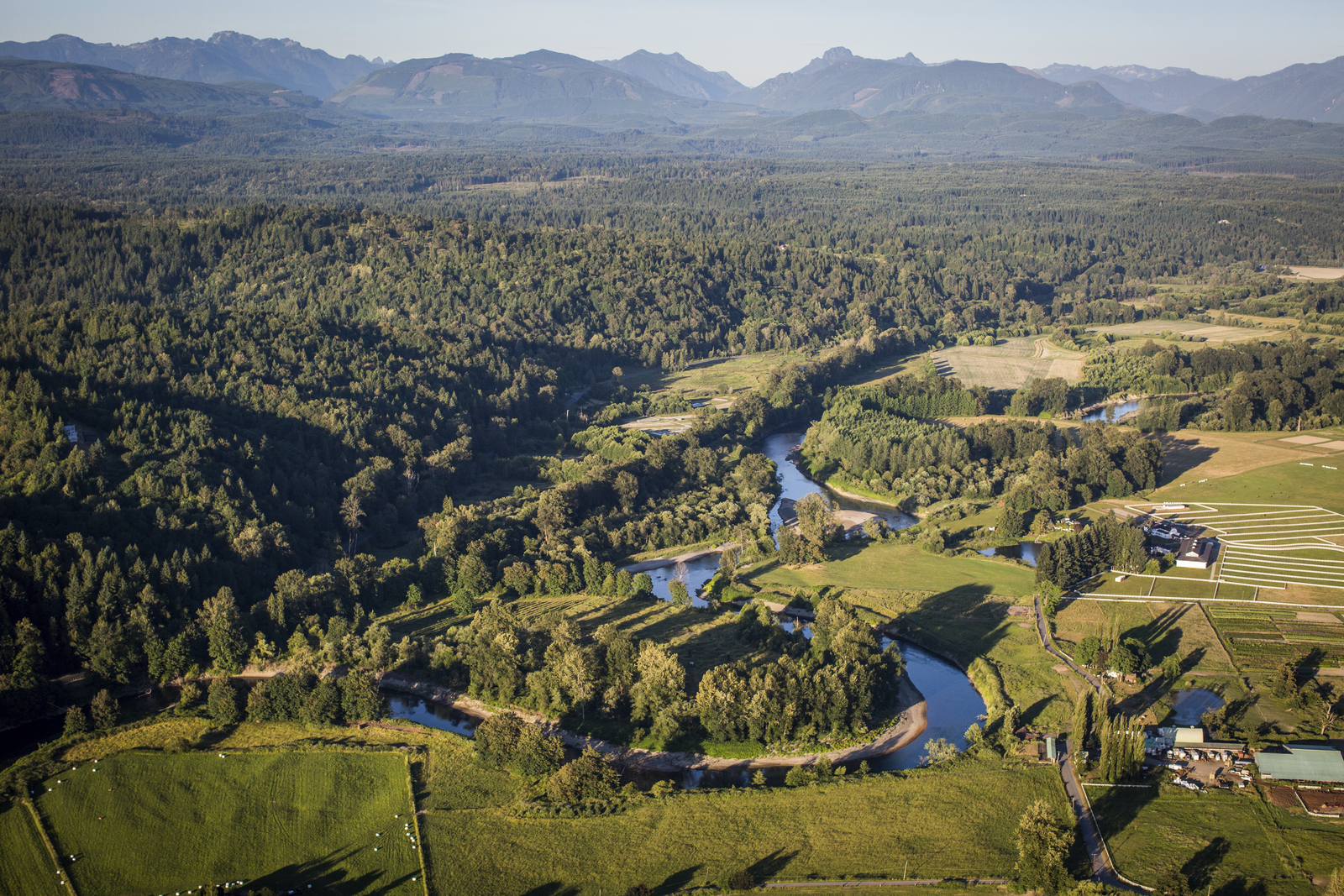Written by Jeanine Stewart, Volunteer writer
In the political world of environmental activism, so often the tendency is to side with one issue at all costs, destroying any and all interests that get in the way.
That’s not the case for The Nature Conservancy’s Puget Sound community relations manager Heather Cole, who joined last October. She works with communities to find environmentally sound solutions to Puget Sound major river systems.
The major question she’s tasked with? How to help communities in Puget Sound develop floodplain management visions – minimizing flood risk in areas prone to flooding while also improving ecosystem benefit, such as improving salmon habitat and water quality – that take into account the often-conflicting interests of a diverse list of stakeholders.
“Local jurisdictions, , tribes, farmers, diking districts, for example – they all have competing values for how they want to manage the same piece of land,” Cole said. “The question is, how do we integrate all those multiple values of the local community?”
Read more about the Conservancy’s work in floodplains here.
Rapid population growth necessitates swift movement on these discussions. The Puget Sound region’s population will likely grow 8 percent between 2014 and 2020, and 28 percent by 2040, according to the Puget Sound Regional Council.
This puts pressure on local jurisdictions to allow more construction. Meanwhile, farmers face a daily struggle to make a living from the same land. And the region’s iconic salmon need habitat and clean water. All these needs must be balanced with those of flood safety, Cole explains.
She’s now hard at work on the first step of balancing these interests, identifying the barriers that get in the way of conservation planning by collaborating with all the parties involved, including local leaders.
Working through conflicting interests to find common ground is Cole’s specialty. She brings nearly a decade of experience working for the state of Washington on natural resource issues, doing research, planning and community development. She also received a master’s in international development and environmental analysis in Australia.
Cole sees each group’s interests as a key piece of the puzzle rather than barriers to a tunnel-vision view of the solution.
“Coming from a natural resources perspective and working in the natural resources field for a number of years, you come to realize that these issues can’t be solved with a technical silver bullet,” Cole said. “We have to understand the people landscape. People are part of the problem, and they are part of the solution.”
This simple and clear-headed approach is a calming reprieve from the complex and lofty goals Cole has her eyes on.
Asked to summarize her work, she says it focuses on “integrated floodplain management where local groups can find agreement on strategies and actions for our rivers that have multiple benefits, such as improving flood safety, agriculture preservation and restoring floodplain connections that support endangered species like salmon; while also bringing in climate change information so that we are making wise investments today that will survive in a changing climate fifty to a hundred years from now.”


















